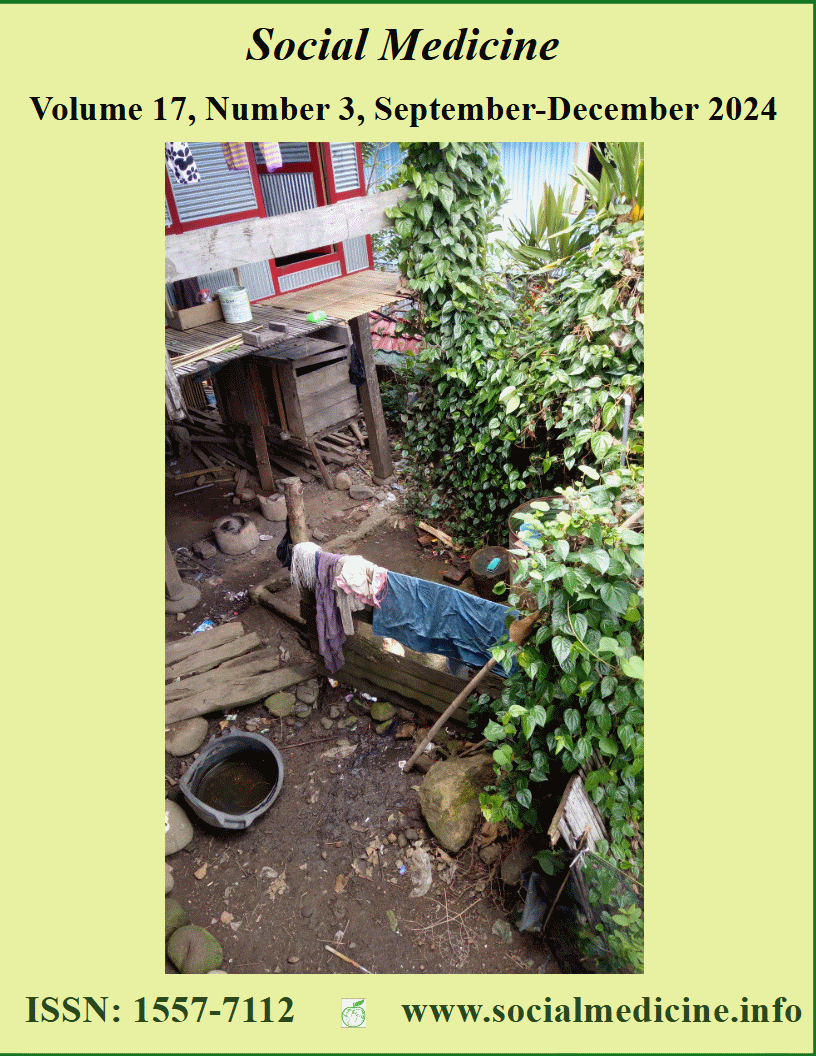How are young people spending their leisure time? Findings from a formative research study in rural central India using a daily activity schedule, V-Can Project
Keywords:
Recreational activities, adolescent health, non-communicable diseases, modifiable risk factors, Participatory Learning and Action (PLA) activityAbstract
Introduction. The younger population is disproportionately affected by NCDs, which are also rapidly affecting the poorer sections of the Indian population. Adolescents' unhealthy food intake and lack of physical activity are major contributors to the emergence of non-communicable diseases (NCDs). Objective.To understand the way leisure time is utilized by the individuals of 10-30 years age from the rural central India, to find opportunities for promoting recreational activities. Methods. A qualitative study was conducted using Daily Activity Schedule for formative research for V-CaN (Vitalizing Communities against No communicable diseases) project in 12 villages selected using convenience sampling maintaining variability with individuals of age 10-30 years. The activity was conducted separately with boys and girls, and content analysis was performed to analyze data
References
National Institute of Medical Statistics and Division of Non-Communicable Diseases, Indian Council of Medical Research, New Delhi, India. IDSP Non-Communicable Disease Risk Factors Survey, Phase-I States of India, 2007-08 [Internet]. p. 142. Available from: https://main.icmr.nic.in/sites/default/files/reports/Phase-1_States_of_India.pdf
Arora M, Chauhan K, John S, Mukhopadhyay A. Multi-sectoral action for addressing social determinants of noncommunicable diseases and mainstreaming health promotion in national health programmes in India. Indian J Community Med. 2011 Dec;36(Suppl 1):S43-49.
Ajay K Anup,Engelgau, Michael,Mahal. The economic implications of non-communicable disease for India [Internet]. World Bank. [cited 2023 Dec 29]. Available from: https://documents.worldbank.org/en/publication/documents-reports/documentdetail/488911468041673131/The-economic-implications-of-non-communicable-disease-for-India
Reddy KS, Prabhakaran D, Jeemon P, Thankappan KR, Joshi P, Chaturvedi V, et al. Educational status and cardiovascular risk profile in Indians. Proc Natl Acad Sci U S A. 2007 Oct 9;104(41):16263–8.
Biswas T, Townsend N, Huda MM, Maravilla J, Begum T, Pervin S, et al. Prevalence of multiple non-communicable diseases risk factors among adolescents in 140 countries: A population-based study. eClinicalMedicine [Internet]. 2022 Oct 1 [cited 2023 Dec 29];52. Available from: https://www.thelancet.com/journals/eclinm/article/PIIS2589-5370(22)00321-2/fulltext
Mundra A, Kalantri A, Jakasania A, Sathe H, Raut A, Maliye C, et al. Vitalizing Community for Health Promotion Against Modifiable Risk Factors of Noncommunicable Diseases (V-CaN) in Rural Central India: Protocol for a Hybrid Type II Implementation Effectiveness Trial. JMIR Research Protocols [Internet]. 2023 Sep 29 [cited 2023 Dec 29];12(1):e42450. Available from: https://www.researchprotocols.org/2023/1/e42450
Pavan Kumar A, Shabadi N, Sinha Roy B, Nath AR, Gopi A. Association of Physical Activity and Screen Time Usage of Adolescents in Rural Areas of Mysore. Digital Journal of Clinical Medicine [Internet]. 2023 Mar 21 [cited 2024 Jan 12];5(1):1–10. Available from: https://rescon.jssuni.edu.in/djcm/vol5/iss1/1
Khuwaja AK, Khawaja S, Motwani K, Khoja AA, Azam IS, Fatmi Z, et al. Preventable Lifestyle Risk Factors for Non-Communicable Diseases in the Pakistan Adolescents Schools Study 1 (PASS-1). J Prev Med Public Health [Internet]. 2011 Sep [cited 2024 Jan 3];44(5):210–7. Available from: https://www.ncbi.nlm.nih.gov/pmc/articles/PMC3249258/
Raskind IG, Patil SS, Tandon N, Thummalapally S, Kramer MR, Cunningham SA. Household chores or play outdoors? The intersecting influence of gender and school type on physical activity among Indian adolescents. Health Educ Behav [Internet]. 2020 Oct [cited 2024 Jan 27];47(5):682–91. Available from: https://www.ncbi.nlm.nih.gov/pmc/articles/PMC7774806/
Satija A, Khandpur N, Satija S, Mathur Gaiha S, Prabhakaran D, Reddy KS, et al. Physical Activity Among Adolescents in India: A Qualitative Study of Barriers and Enablers. Health Educ Behav. 2018 Dec;45(6):926–34.
Uddin R, Lee EY, Khan SR, Tremblay MS, Khan A. Clustering of lifestyle risk factors for non-communicable diseases in 304,779 adolescents from 89 countries: A global perspective. Preventive Medicine [Internet]. 2020 Feb 1 [cited 2024 Jan 4];131:105955. Available from: https://www.sciencedirect.com/science/article/pii/S0091743519304384
Khan M, Syed ZUI, Jabeen A. Perceptual Study Regarding the Impact of Recreational Activities Upon Healthy Lifestyle of Youth. Global Educational Studies Review. 2020 Jun 30;V:19–27.
Downloads
Published
How to Cite
Issue
Section
License
Copyright (c) 2024 Social Medicine

This work is licensed under a Creative Commons Attribution-NonCommercial-NoDerivatives 4.0 International License.

